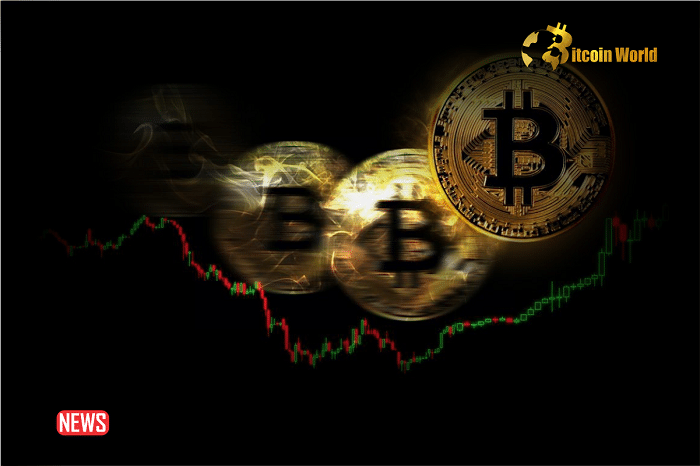Is Bitcoin acting out of character? Typically seen as the stable elder statesman of crypto, Bitcoin (BTC) has recently shown more price volatility than Ether (ETH). What’s driving this unusual behavior, and what does it mean for your crypto portfolio? Let’s dive in.
Why is Bitcoin More Volatile Than Ether Right Now?
Several factors are contributing to Bitcoin’s recent volatility spike:
- Spot ETF Inflows: The approval of spot Bitcoin ETFs in the U.S. has opened the floodgates for institutional investment, leading to significant inflows and increased price swings.
- Halving Hype: The upcoming Bitcoin halving, a quadrennial event that reduces the block reward for miners, is creating anticipation and speculation in the market.
- Ether ETF Uncertainty: The dwindling probability of an Ether ETF approval by May seems to have tempered enthusiasm around ETH.
Essentially, all eyes are on Bitcoin right now, and that attention is translating into price volatility.
The Numbers Don’t Lie: Bitcoin’s Volatility Surge
Data from Kaiko shows a clear trend: Bitcoin’s annualized 30-day historical volatility has jumped to nearly 60%, exceeding Ether’s by almost 10 percentage points. This is the widest gap observed in over a year. Historical volatility measures the degree of price fluctuations over a specific period, indicating just how turbulent Bitcoin’s price action has become.
Bitcoin Halving: A Double-Edged Sword?
The Bitcoin halving is a programmed event that occurs approximately every four years. It reduces the reward given to miners for each block they mine, effectively cutting the supply of new Bitcoins in half. Here’s a breakdown:
- What Happens: The per-block reward will decrease from 6.25 BTC to 3.125 BTC.
- When: Expected around April 21st.
- The Theory: Reduced supply, coupled with steady or increasing demand, should lead to price appreciation.
Historically, Bitcoin has experienced significant rallies in the 12-18 months following previous halvings (2012, 2016, and 2020). However, this time is different. Bitcoin has already surpassed its previous all-time high before the halving, making the event even more intriguing and potentially setting the stage for a unique market reaction.
The “Sell-The-News” Scenario
Greg Magadini, director of derivatives at Amberdata, suggests that the current bullish positioning ahead of the halving could lead to a “sell-the-news” pullback after the event. This means that after the halving occurs, and the initial excitement subsides, the price could potentially drop as investors take profits.
Magadini points to the options market, which is pricing in the halving event with a steep implied volatility (IV) contango before April 26th. This indicates that the market anticipates increased volatility as the halving approaches.
What Does This Mean For You?
Here are some actionable insights to consider:
- Prepare for Volatility: Bitcoin’s price swings are likely to continue in the short term. Manage your risk accordingly.
- Consider a “Sell-The-News” Scenario: Be aware of the potential for a pullback after the halving. Have a plan in place to manage your positions.
- Do Your Research: Don’t rely solely on hype. Understand the fundamentals of Bitcoin and the potential impact of the halving.
In Conclusion: Navigating the Volatility
Bitcoin’s current volatility, driven by ETF inflows and the upcoming halving, presents both opportunities and risks. While the long-term outlook for Bitcoin remains positive, traders and investors need to be prepared for potential price swings and a possible “sell-the-news” event. By understanding the factors driving volatility and developing a sound risk management strategy, you can navigate the market with confidence.
Disclaimer: The information provided is not trading advice. Bitcoinworld.co.in holds no liability for any investments made based on the information provided on this page. We strongly recommend independent research and/or consultation with a qualified professional before making any investment decisions.
#Binance #WRITE2EARN
Disclaimer: The information provided is not trading advice, Bitcoinworld.co.in holds no liability for any investments made based on the information provided on this page. We strongly recommend independent research and/or consultation with a qualified professional before making any investment decisions.


